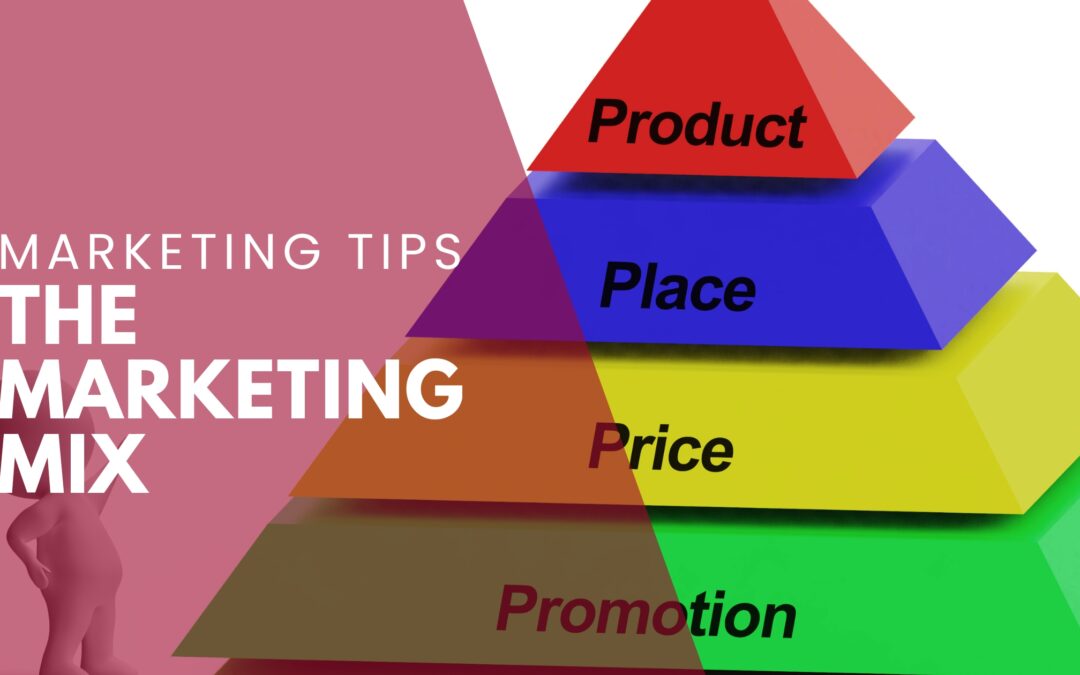How you design and deliver your organisation’s value proposition to customers is often called the 7Ps of Marketing or The Marketing Mix. Originally comprised of the 4 Ps (Product, Price, Placement, and Promotion) has evolved into the 7 Ps of marketing to include People, Physical Evidence, and Process.
Although I specialise in marketing promotion and positioning, it’s worth considering the whole Marketing Mix when planning your marketing strategy, because they often overlap and influence each other. For example, your product and price can have a direct effect on your promotional efforts. No amount of advertising will sell a product that doesn’t meet the target audience’s needs if they think it’s overpriced or poor quality.
What are the 7 Ps of Marketing?
For businesses, the 7 Ps can offer a framework for formulating an effective marketing strategy. The 8 elements of the Marketing Mix are:
Product (or Service)
When customers understand the value you offer and how it meets their needs, they are more likely to make a purchase or take a desired action. Product considerations involve every aspect of what you’re trying to sell, including the design, quality, features, options, packaging, and market positioning. When planning your product marketing strategy things to consider include:
- What is the core benefit of this product for the customer?
- How does my product fulfil the customers’ expectations?
- Shall I deliver it as a bundle/package?
- How is it different from what others are offering in the marketplace?
- What are some of the features I could introduce? What are the customers demanding?
Price
Many factors go into deciding on pricing. Pricing strategies include things like cost, perceived value, competition, market positioning, and promotional objectives. Everything we do in marketing is about increasing the value in the eyes of the consumer and working to reduce our costs. Either way, we seek to increase our margin. Things to consider when planning your pricing strategy could include:
- Is my pricing greater than my customer’s perception of value?
- Am I too cheap? Am I sending a message of poor quality?
- Is my pricing competitive?
- Am I making a profit?
Whether setting prices higher for perceived quality or lower for market penetration, aligning pricing with your overall marketing strategy is essential.
Promotion
Promotion encompasses various channels like advertising, content marketing, social media, email marketing, search engine optimisation, public relations, and more. It is how you get the word out about your product or service, and your promotional strategies and tactics will differ and overlap depending on your target audience and customer behaviour.
Place
Place is about ‘where you sell your product.’ Do you have a physical store, home office, or e-commerce? The same marketing research that informed your price and product decision, will likely inform your placement. Placement decisions involve identifying where customers will seek out your product or service. Understanding customer preferences will help guide this decision.
People
Every interaction with a customer, directly or indirectly, influences their perception of your brand. By investing in skilled personnel, fostering a conducive company culture, and emphasising customer relationships you can contribute to a positive customer experience.
Physical Evidence
Physical evidence encompasses all aspects of your customer’s interaction with your business. This spans from the environment in which you deliver your product or service, be it physical or digital. This includes the design of your shop, your website, your brand’s logo and identity, product packaging, social media presence, Google reviews, etc.
Positioning is often considered an eighth element of the Marketing Mix because it focuses on how you want your product or service to be perceived by your target audience. However, I class this as physical evidence. Positioning incorporates your unique selling points (USP) and the overall messaging of your marketing campaign. A key component of this is understanding unmet customer needs and pain points, and tailoring messaging to meet those needs.
Process
Efficient processes enhance the customer’s experience. Elements to consider when planning your process strategy could include seamless transactions, cost-effective delivery, reliable shipping, staffing, customer service, and your customer complaint process; just to name a few.
Often marketing is just viewed as promotion and advertising, however, marketing involves a comprehensive approach to understanding and satisfying customer needs and wants. While promotion is an essential aspect of marketing, it’s just one component of a broader strategy. The 7 Ps can ensure you’re looking at the whole picture when working towards your marketing goals.
Ready to take your marketing to the next level? Whether you need engaging articles, help with social media, or compelling copy, I’ve got you covered. Reach out today, and let’s get started.

